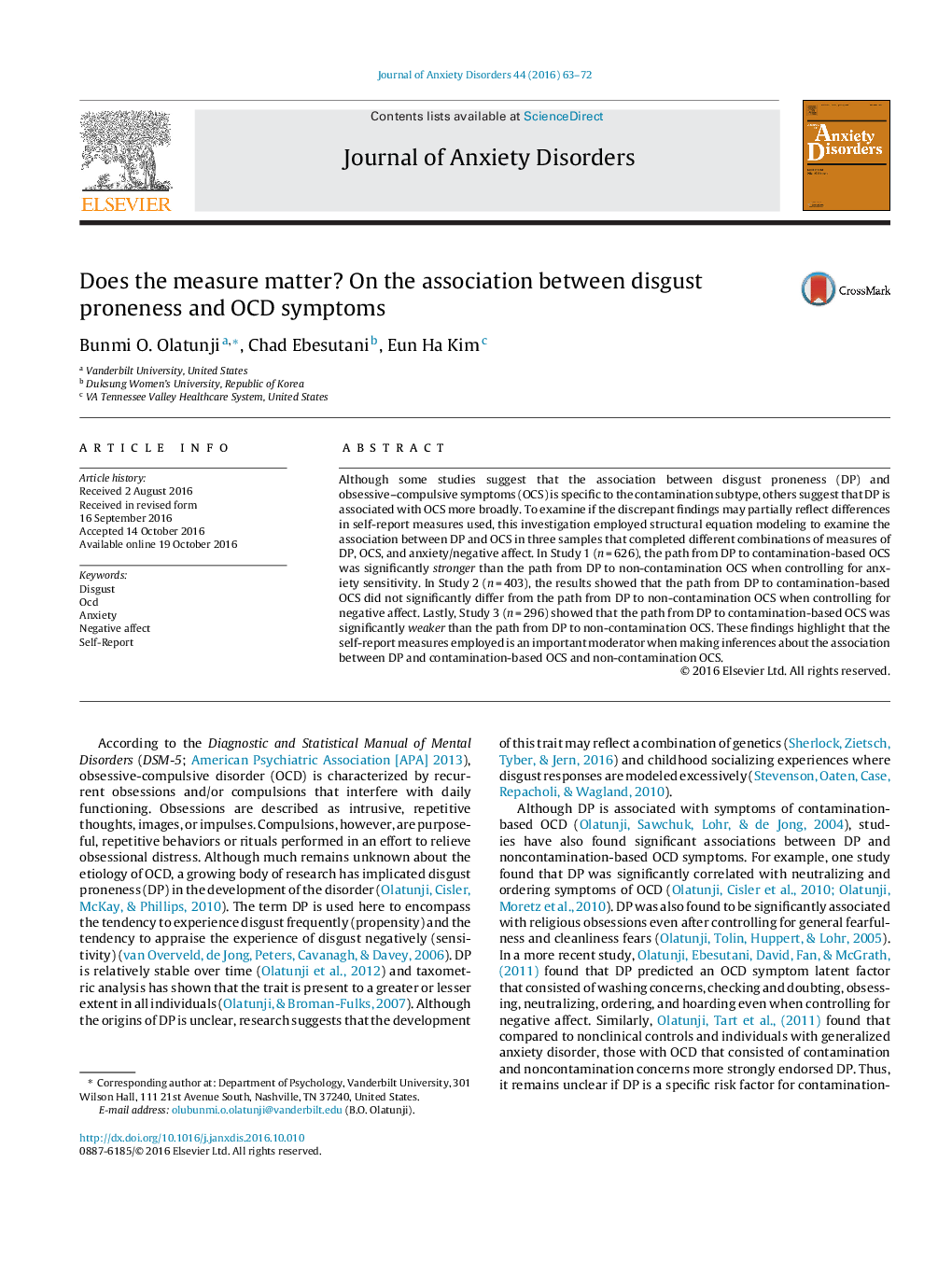| Article ID | Journal | Published Year | Pages | File Type |
|---|---|---|---|---|
| 5038955 | Journal of Anxiety Disorders | 2016 | 10 Pages |
â¢Disgust proneness is associated with contamination and non-contamination-based obsessive-compulsive symptoms.â¢Association between disgust proneness and obsessive-compulsive symptoms is independent of symptoms of negative affect.â¢Association between disgust proneness and obsessive-compulsive symptoms is moderated by the measures used.
Although some studies suggest that the association between disgust proneness (DP) and obsessive-compulsive symptoms (OCS) is specific to the contamination subtype, others suggest that DP is associated with OCS more broadly. To examine if the discrepant findings may partially reflect differences in self-report measures used, this investigation employed structural equation modeling to examine the association between DP and OCS in three samples that completed different combinations of measures of DP, OCS, and anxiety/negative affect. In Study 1 (n = 626), the path from DP to contamination-based OCS was significantly stronger than the path from DP to non-contamination OCS when controlling for anxiety sensitivity. In Study 2 (n = 403), the results showed that the path from DP to contamination-based OCS did not significantly differ from the path from DP to non-contamination OCS when controlling for negative affect. Lastly, Study 3 (n = 296) showed that the path from DP to contamination-based OCS was significantly weaker than the path from DP to non-contamination OCS. These findings highlight that the self-report measures employed is an important moderator when making inferences about the association between DP and contamination-based OCS and non-contamination OCS.
